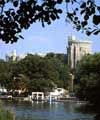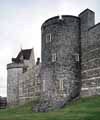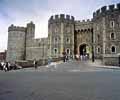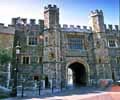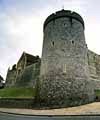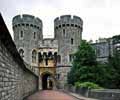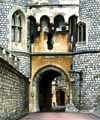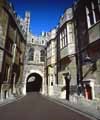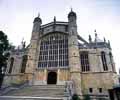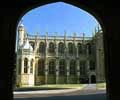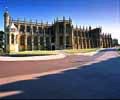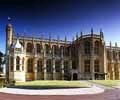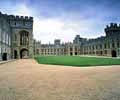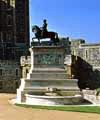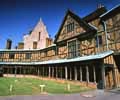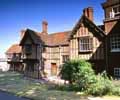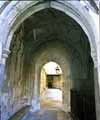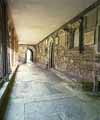Windsor
Berkshire
Much has been written about this castle in detail which, I feel, does not need to be repeated here. Enough to say, that this proud complete and largest of the English castles, dominates the surrounding countryside.
It was built on a chalk cliff overlooking the River Thames, just three miles from the original Saxon settlement of, Windsora, where Edward the Confessor had a hunting lodge.
After King Harold’s defeated at the Battle of Hastings on 14th October 1066, the victorious Norman, William the Conqueror was crowned King in Westminster Abbey on Christmas Day, He then set about rapidly building a series of castles around London, Windsor being one of them. It was a timbered Motte and Bailey fort, which may have been extended later into two baileys in the reign of Henry I.
King Henry I is reported to have been the first monarch to hold his court here in 1110.
By the treaty of Winchester, dated 1153, 'The motte of Windsor' was in the custody of Richard de Lucy and £550 was spent on 'The works of the King's houses of Windsor'.
Between 1157 and 1190 Ailnoth l'ingeniator was in charge of the King's works at Windsor and as the King's engineer, he received a yearly fee of £10. He may have been the architect involved with rebuilding the keep into a stone shell keep. No mention of its construction is recorded in the pipe rolls of Henry II, but Ailnoth viewed the lead work of the castle and the new buildings which probably stood in the upper bailey. Their rectangular towers were characteristic of that time. Also working here during this period was, Godwin the mason who was allowed, 1 mark a year for robes and was in charge of masonry work from 1167 to 1172, under the general direction of Ailnoth.
During King Edward III reign, over £51,000 was spent on the castle works at Windsor. One of the most extraordinary building programmes to be undertaken during his reign, was the ordering of a new house to be constructed in the upper bailey which the King called, The Round Table. This was for a projected order of chivalry. The Order of the Round Table, with three hundred knights. This building and its Arthurian entertainments, was to help bind his nobles to his cause to claim the throne of France. Although most of the details are lacking, it appears, work began on 16th February 1343. The building was to be circular in shape, 200ft in diameter and with the purchase of 40,000 tiles and their pins, for a permanent roofing. This was to cover two concentric walls enclosing a circular open space.
In charge of this work were the King’s Master Mason, William de Ramsey and the King’s Master Carpenter, William Hurley both were paid 1 shilling per day. They were also responsible for impressing many craftsmen, from various parts of the country, for the work that had to be done.
This work stopped on 27 November 1344 when it is believed, King Edward III received news of the French King’s outrage, who felt threatened by such an order of chivalry,
Never-the-less the King’s impressive project did galvanise the English nobles enough to be able to launch a campaign in France and defeat the French at Crécy. Subsequently, King Edward III changed his mind and founded a much more exclusive order in 1348, The Most Noble Order of the Garter, centred upon the Collegiate Chapel of St George.
The total cost of the project up to that time was over £507. Of the building, only the foundations remain.
For further information, click on the link below.
http://www.royalcollection.org.uk/visit/windsorcastle
English &Welsh Castle Picture Search Results
Your Search returned 26 pictures.
Click on a picture to enlarge and order

